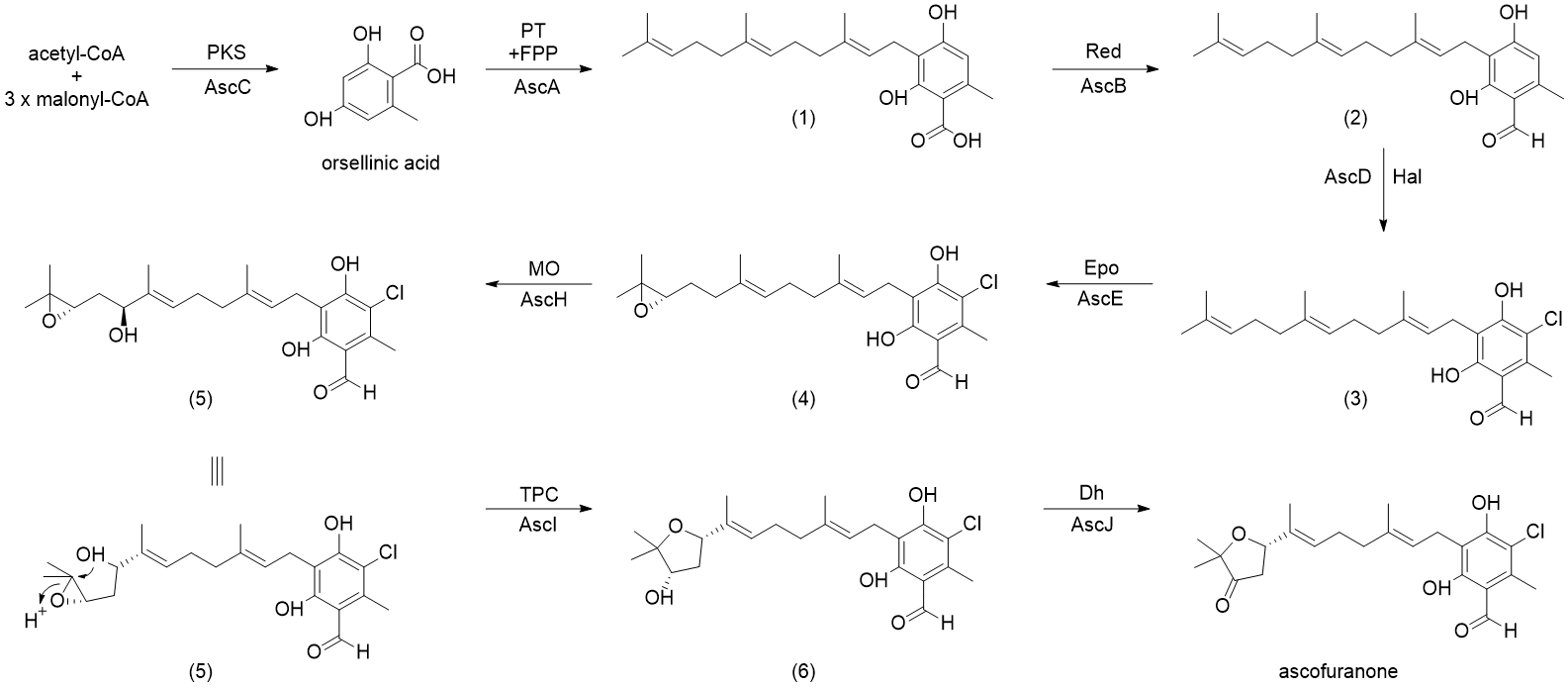Ascofuranone on:
[Wikipedia]
[Google]
[Amazon]
Ascofuranone is an

antibiotic
An antibiotic is a type of antimicrobial substance active against bacteria. It is the most important type of antibacterial agent for fighting bacterial infections, and antibiotic medications are widely used in the treatment and prevention of ...
produced by various ascomycete fungi including ''Acremonium sclerotigenum
''Acremonium'' is a genus of fungi in the family Hypocreaceae. It used to be known as ''Cephalosporium''.
Description
''Acremonium'' species are usually slow-growing and are initially compact and moist. Their hyphae are fine and hyaline, and pro ...
'' that inhibits the ''Trypanosoma brucei
''Trypanosoma brucei'' is a species of parasitic Kinetoplastida, kinetoplastid belonging to the genus ''Trypanosoma'' that is present in sub-Saharan Africa. Unlike other protozoan parasites that normally infect blood and tissue cells, it is exclus ...
'' alternative oxidase
Alternative or alternate may refer to:
Arts, entertainment and media
* Alternative (''Kamen Rider''), a character in the Japanese TV series ''Kamen Rider Ryuki''
* ''The Alternative'' (film), a 1978 Australian television film
* ''The Alternative ...
and is a lead compound in efforts to produce other drugs targeting this enzyme for the treatment of sleeping sickness. The compound is effective both in vitro cell culture
Cell culture or tissue culture is the process by which cells are grown under controlled conditions, generally outside of their natural environment. The term "tissue culture" was coined by American pathologist Montrose Thomas Burrows. This te ...
and in infections in mice.
Ascofuranone has also been reported to have anti-tumor activity, and modulate the immune system
The immune system is a network of biological processes that protects an organism from diseases. It detects and responds to a wide variety of pathogens, from viruses to parasitic worms, as well as cancer cells and objects such as wood splinte ...
.
__TOC__Biosynthesis
The proposed biosynthesis of ascofuranone was reported by Kita et al., as well as by Abe et al. The prenylation of orsellinic acid, followed by terminal cyclization through epoxidation is how ascofuranone can be synthesized. Compound (1), ilicicolinic acid B, was found to be produced from polyketide synthase (PKS) StBA and that AscCABD are responsible for the biosynthesis of ilicicolin A (3). Ilicicolin B (2) was found to be produced by expressing AscC (polyketide synthase) which is then followed by expression of AscA (prenyltransferase). AscD (flavin-dependent halogenase, flavin binding enzyme) is able to catalyze the chlorination of ilicicolinic acid B (2) to yield ilicicolin A (3). Expodiation of (3) by AscE (P450 monooxygenase) leads to the formation of ilicicolin A epoxide (4). Ilicicolin A epoxide can then be hydroxylated by AscH at C-16 (P450 monooygenase) to yield intermediate (5) which can then be cyclized by AscI (eight-transmembrane protein, TPC) into ascofuranol (6), specifically through 6-endo-tet cyclization. Finally, ascofuranol (6) can be oxidized by AscJ (NAD(P)-dependent alcohol dehydrogenase) leading to the formation of ascofuranone.
References
{{reflist Antibiotics Terpeno-phenolic compounds Aromatic aldehydes Ketones Chloroarenes Tetrahydrofurans Halogen-containing natural products